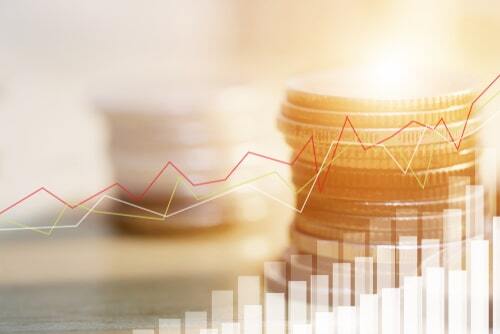
Peak in gold price? Precious metal to drop below $1,650 in next two years, says Westpac
Gold's record high of $2,070 an ounce was likely the peak, at least for now, according to Westpac, which sees gold dropping below $1,650 in the next two years.
Risk aversion has peaked, and so has the gold price, Westpac senior economist Justin Smirk said in his November update. "2020 has seen a peak in risk aversion, central bank liquidity, and global uncertainty hence our forecast for gold prices to ease in 2021," Smirk said.
Westpac projects for gold to average below $1,760 an ounce by the end of next year and then drop all the way to $1,633 at the end of 2022.
The situation will turn around only by mid-2023, when the precious metal will begin to climb and rise to $1,848 by September 2024, according to the long-term forecast.
This outlook comes as gold has been on a losing streak amid better economic data and more risk-on sentiment in the marketplace in light of positive COVID-19 vaccine news.
At the time of writing, December Comex gold futures were trading at 1,834.00, down 2.05% on the day after shedding nearly $40 on Monday.
"U.S. equity markets recorded gains, helped by positive vaccine news. Currencies were notably buffeted by stronger U.S. PMI data, which helped the USD bounce off a three-month low. U.S. bond yields rose slightly," Westpac strategists summarized on Monday.
Vaccine developments are "game changers" for the U.S. economy, said Westpac chief economist Bill Evans.
"Our forecasts have been for a fairly 'steady' profile for U.S. Treasuries through 2021 as markets were uncertain about the recovery outlook in the face of competing 'forces' – prospects of a vaccine and the sharp lift in case loads," said Evans on Monday.
The risk-on sentiment seems to be winning the tag of war between positive vaccine news and a sharp rise in coronavirus cases.
"These earlier and more convincing than expected results on the vaccines … point to markets favoring the improving vaccine outlook over the immediate threat from rising case-loads. And as we move through 2021, that dynamic will become more apparent," Evans said.
A more optimistic economic outlook could also pressure the Federal Reserve to begin to curtail its loose monetary policy next year, the chief economist added.
"We accept that the Federal Reserve may remain active in the Q.E. space through 2021 but feel that the optimism associated with the successful distribution of vaccines through 2021 will be the dominant market force while providing the Fed with some scope to ease back on support," he noted.
Westpac also raised its forecast for U.S. 10 year Treasuries through 2021. "We have now brought that rate profile in 2022 forward to 2021 with the 10-year bond rate rising from 0.80% in December through to 1.2% by end 2021," Evans added.
One concern to watch with the introduction of a vaccine is the percentage of the population choosing to get it, Westpac senior economist Elliot Clarke wrote.
"One of the main challenges after approval will be the extent of take–up of the vaccine. For the spread of the virus to be effectively curtailed, at least 60–70% of the population will need to achieve immunity. Even for a highly effective vaccine that 'works' say 90% of the time, that will require a high take up rate in the order of 65–80%. Studies across the U.S. and Europe have seen just over 50% of adults indicating they would accept a COVID–19 vaccine," Clarke noted.
Also, important to keep in mind that the U.S. economy is not out of the woods yet, and it will need more fiscal stimulus.
"Without a meaningful, medium-term focused stimulus package after January's inauguration, the U.S. economy still risks getting caught in a sub-trend growth, high–unemployment environment in 2021 – with considerable downside risks," Clarke said.
By Anna Golubova
For Kitco News
David